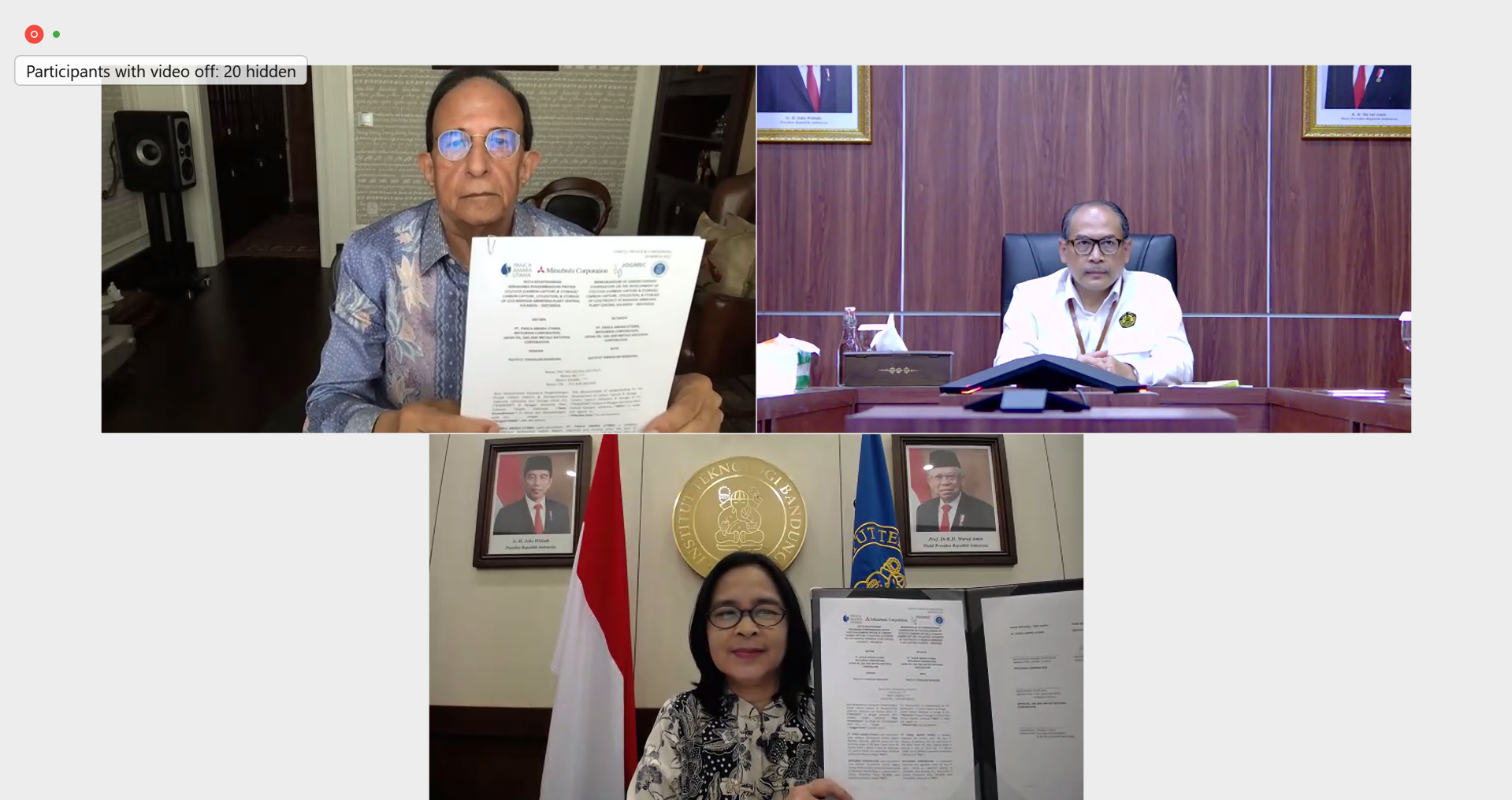ITB Signed MoU of Emission Absorption Technology with PT PAU and Mitsubishi Corp
By Adi Permana
Editor Adi Permana

BANDUNG, itb.ac.id – Institut Teknologi Bandung (ITB) signed a Memorandum of Understanding (MoU) for development of environmentally friendly ammonia production technology. The MoU signed by ITB Rector Prof. Reini Wirahadikusumah Ph.D. and Mr. Chander Vinod Layora as President Director and CEO of PT Panca Amara Utama (PAU). The signing is carried out online on Thursday (18/3/2021). This cooperation will be focusing on CCS/CCUS project development on Amonia Bangai Factory, Central Sulawesi.
The deal that could be a new beginning in the development of Carbon Capture Storage (CCS) and Carbon Capture Utilization and Storage (CCUS) technology in Indonesia will involve two states; Indonesia and Japan. This collaboration will directly involve the well-known company, Mitsubishi Corporation, Japan Oil, Gas, and Metals National Corporation (JOGMEC), and Panca Amara Utama Company.
“I believe that this MoU singing is a great leap forward in ammonia utilization as a future low carbon fuel,” said Mr. Vinod Layora in his welcome speech. Indonesia exports about 1 million metric tons of ammonia to japan every year, this figure is estimated to increase to 3 million metric tons in 2030. By implementing CCS/CCUS technology in ammonia production locations, the resulting environmental impact will be reduced.
Besides Mr. Vinod Layora, several other parties also deliver their remarks. Mr. Toshizaku Ebato deliver his words about CCS Promotion Group launching by JOGMEC in July 2020 as one of the attempts to reach a neutral carbon target by 2050. The next welcome speech came from Mr. Hiroki Haba as the Senior Vice President of Mitsubishi Corporation. The event then ends with remarks from Mr. Rahul Puri as the Commissioner of PAU Company.
Gait ITB as a Research Center of CCS/CCUS in Indonesia
“ITB has begun CCS/CCUS research in 2010 through a funding program of Science and Technology Research Partnership for Sustainable Development (SATREPS) from Japanese government,” said Prof. Reini. The first result of that collaboration is a CO2 injection project on the reservoir of Migas Gundih Field in Central Java. Since then, ITB still continues the research with international parties funding. According to Prof. Reini, heretofore, there are about 45 ITB researchers who are involved in this project.
Director General of Migas has made ITB to be the national Central of Excellence in CCS/CCUS research. “After the designation we became more active in research and promotion of this technology,” said Prof. Reini. According to her, nowadays CCS/CCUS terminology has been known more in the petroleum sector since Migas Gundih Field project succeeded to pump up the remaining oil.
CCS and CCUS as The Key to Reach Carbon Neutral
Indonesia has committed to reduce carbon emission by 29% to 41% in 2030. Prof. Reini saw it as a high potential for implementing CCU and CCUS technology in the energy sector to achieve that goal. She stated that about 58% of greenhouse gas emissions came from the energy sector, and with this kind of cooperation is expected to accelerate clean energy development.
CCU and CCUS is a technology to store and utilize carbon dioxide emission gas. This technology could prevent huge amounts of carbon dioxide from being released to the atmosphere.
“I believe that CCU and CCUS is the most realistic solution to achieve zero emission,” added Mr. Hiroki Haba in his remarks. CCU and CCUS technology works by catching carbon dioxide gas and then compressing it until it becomes liquid. Then, the liquid carbon dioxide will be moved and stored in a reservoir.
Reporter: Favian Aldilla (Teknik Sipil, 2019
Translator: Aghisna Syifa Rahmani (TPB-SITHS 2020)

.jpg)

.jpg)
.jpg)
.jpg)